Sharing is caring!
These are vegan Korean spicy mixed noodles or Bibim Guksu 비빔국수 with some kimchi.
WHAT IS 비빔국수 OR BIBIM GUKSU?
비빔 (bibim) means mixed (similar to bibimbap), while guksu 국수 is noodles. So put 비빔국수 together and we have bibimguksu or mixed noodles.

How would I describe these noodles?
- Hearty
- Spicy
- Refreshing
–all at the same time! ?

The thin wheat noodles (called somyeon) are cooked until chewy then immediately run through water until they’re cold before being mixed in a slightly tangy, sweet, and savoury sauce with kimchi.
IMPORTANT STEPS TO NOTE TO FOR THIS RECIPE:
- Prepare the sauce before you cook the noodles, so this way you can immediately transfer the noodles to the sauce
- Be ready with a strainer or colander to drain the noodles in so you can immediately stop them from cooking after you remove them from the heat
- These noodles are best enjoyed freshly made. Leaving them soaked in the sauce for too long can cause the noodles to get soggy.

Overall, this bowl of Bibim Guksu or Korean Spicy Mixed Noodles dish is seriously so easy and simple to put together plus really refreshing, too.
This recipe was also inspired by that *iconic* scene in the Korean drama Start-Up where our good boy HJP was mixing noodles while confessing haha–if you know, you know. ?
See the screen shots of that scene below.

Now let’s get on to making the noodles!
Let’s start with: THE SAUCE
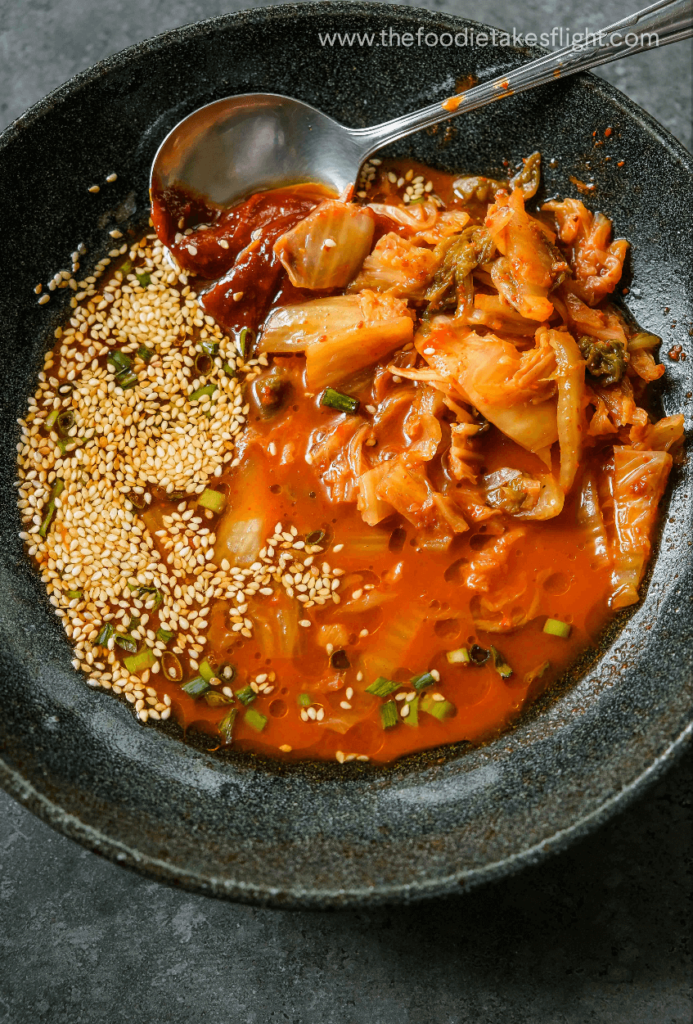
You’ll just need 1 large bowl for the sauce and a few ingredients:
- 1 tbsp gochujang, add more to taste if you’d like
- 1/2 cup chopped vegan kimchi (homemade kimchi recipe here)
- 1 1/2 tbsp soy sauce
- 1 tbsp rice vinegar
- 1/4 cup vegan kimchi juice
- 1 tbsp liquid sweetener such as rice syrup, maple syrup, etc.
- 1 tsp sugar
- 1 tbsp sesame oil
- 1 tsp sesame seeds
- 1 clove garlic, minced
- 1 scallion, chopped
Find the full recipe below!
Simply mix everything together in the bowl.
Also feel free to adjust the measurements to your desired taste!

THE NOODLES
This recipe is traditionally made using somyeon, which is are very thin wheat noodles–very similar to angel hair pasta in terms of thinness!

To Cook
The thin wheat noodles are basically cooked until chewy then immediately run through water.

After cooking them until chewy to my liking, I immediately run them through cold water to stop the cooking and to get the noodles cold.

Here’s a close-up of those noodles after cooking:

How to enjoy your Bibim Guksu:
First, add the noodles in the sauce:

Then afterwards, mix the noodles well to evenly coat in the sauce:

It’s really important to prepare the sauce before you cook the noodles so you can immediately transfer the freshly cooked and drained noodles into the sauce.

Lastly, Top with some sliced cucumber and scallion (if you’d like!)

Then mix it all together (again!)

ENJOY!
There are two ways you can enjoy your noodles (with a few more sides!)
Version 1: With more vegan kimchi and pickled radish on the side

Version 2: With some veggie dumplings
Here is another version, I enjoyed the bibim guksu with some pan-fried veggie dumplings (homemade dumplings recipe here). This version was also less saucy because I opted to have the kimchi on the side.

The veggie dumplings were coated with some chili garlic sauce!

Which one do I prefer? Well that’s a tough one to answer because I really enjoyed both versions and overall really LOVE THESE NOODLES!
This Bibim Guksu is really so refreshing and satisfying at the same time.
I hope you enjoy this recipe! You’ll find it below.

You might enjoy these other Korean recipes:
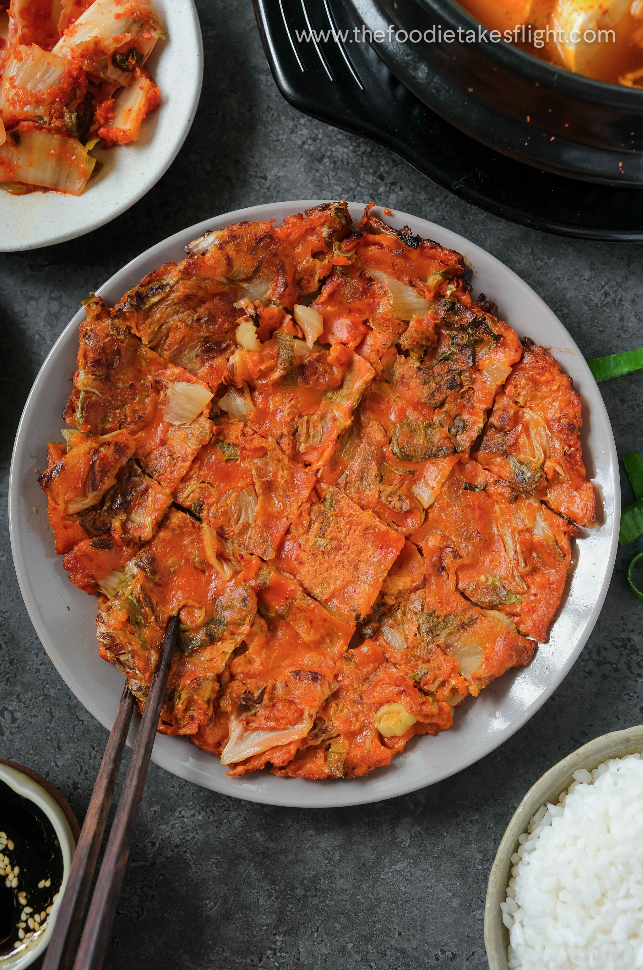
- Jjajangmyeon
- Vegan Kimchi
- Korean Beansprout Salad
- Sundubu Jjigae (Korean Soft Tofu Stew)
- Kimchi Pancakes or Kimchi Jeon
- Kimchi Noodle Soup with Dumplings
- Kimchi Noodle Stir-Fry

Are you looking for more delicious, vegan recipes?
Get a copy of my upcoming cookbook, Vegan Asian!
If you crave vegan-friendly versions of classic Asian dishes, this cookbook is packed with Southeast and East Asian dishes inspired by those I grew up enjoying at home and those I’ve tried from my travels. From iconic Thai dishes to piping-hot Japanese fare and everything in between, the recipes in this will take your palate on a delicious food trip across Asia, and hopefully keep you coming back for more!
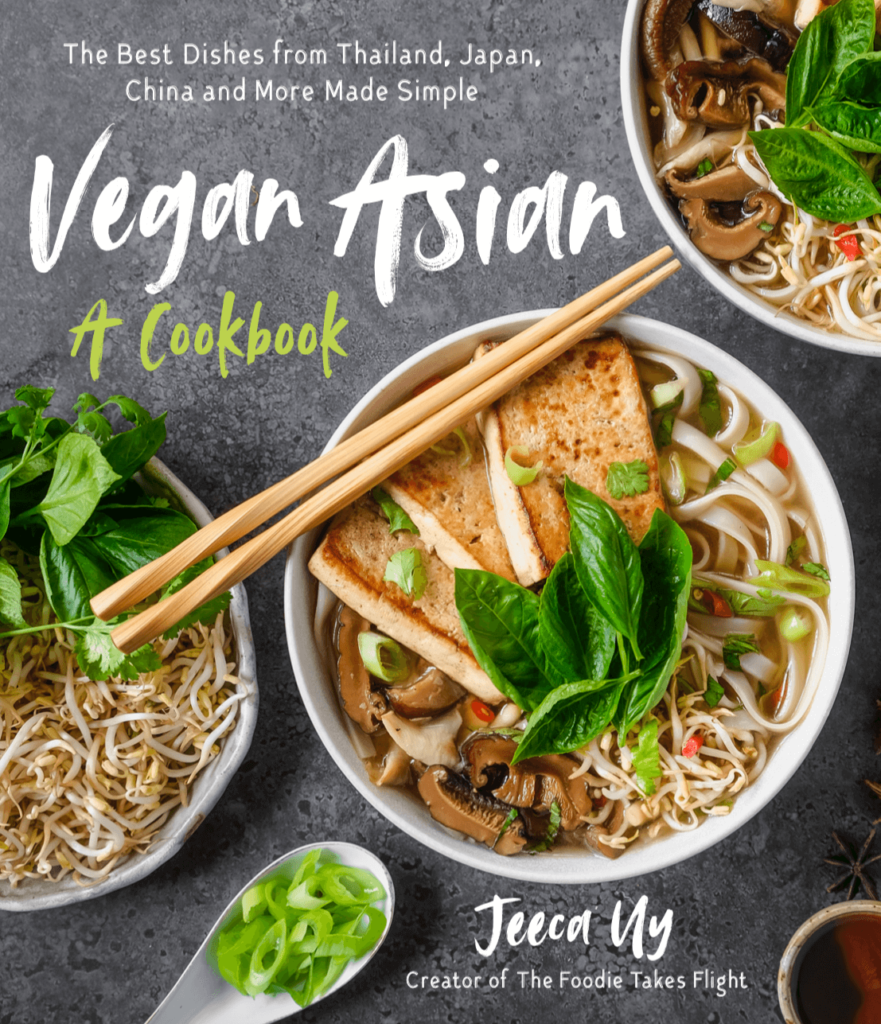

Vegan Korean Spicy Mixed Noodles (Bibim Guksu 비빔국수)
Ingredients
Noodles
- 120 g somyeon , dry thin wheat noodles
Sauce
- 2-4 tbsp gochujang , add more or less depending on desired heat and taste (see notes)
- 1/2 cup chopped vegan kimchi (homemade kimchi recipe here)
- 1/4 cup vegan kimchi juice (homemade kimchi recipe here)
- 1 1/2 tbsp soy sauce
- 1 tbsp rice vinegar
- 1 tbsp liquid sweetener such as rice syrup, agave, maple syrup, etc.
- 1 tsp sugar
- 1 tbsp sesame oil
- 1 tsp sesame seeds
- 1 clove garlic minced
- 1 scallion or green onion chopped
To Finish
- Julienned cucumber
- Sliced scallion for garnish
- More chopped vegan kimchi
- Sliced pickled radish or danmuji
Other Options to Pair with the Noodles
- Pan-fried veggie dumplings (homemade dumplings recipe here)
- Chili oil or homemade chili garlic sauce, for dumplings
Instructions
- Mix all the sauce ingredients into a bowl. Set aside. It's important to prepare the sauce before cooking the noodles so you can immediately add the noodles in the sauce later on.
- Heat a small pot of water over high heat. When it boils, add in the noodles.
- Leave the noodles to cook for a few minutes until still very chewy. Turn off the heat.
- Strain then noodles from from the water.
- Immediately run the noodles through cold water 3 to 4 times to stop cooking and to cool them. I also like to add some ice cubes to really get these noodles cold.If you’d like to enjoy these noodles hot, you can immediately transfer the noodles into the sauce.
- Add the noodles into sauce.
- Mix the noodles into the sauce until well coated.
- Serve with some chopped vegan kimch and more scallions, if you’d like. Mix well again.
- You can also enjoy this with a side of some pickled radish and more kimchi.
- In another version, I made these with some pan-fried veggie dumplings.
WATCH Video
Notes
Gochujang or Korean Chili Paste
- Gochujang helps thicken the sauce to coat the noodles better. So usually the more gochujang you add, the richer and spicier the sauce!
NUTRITIONAL INFO
You can pin these Images:


















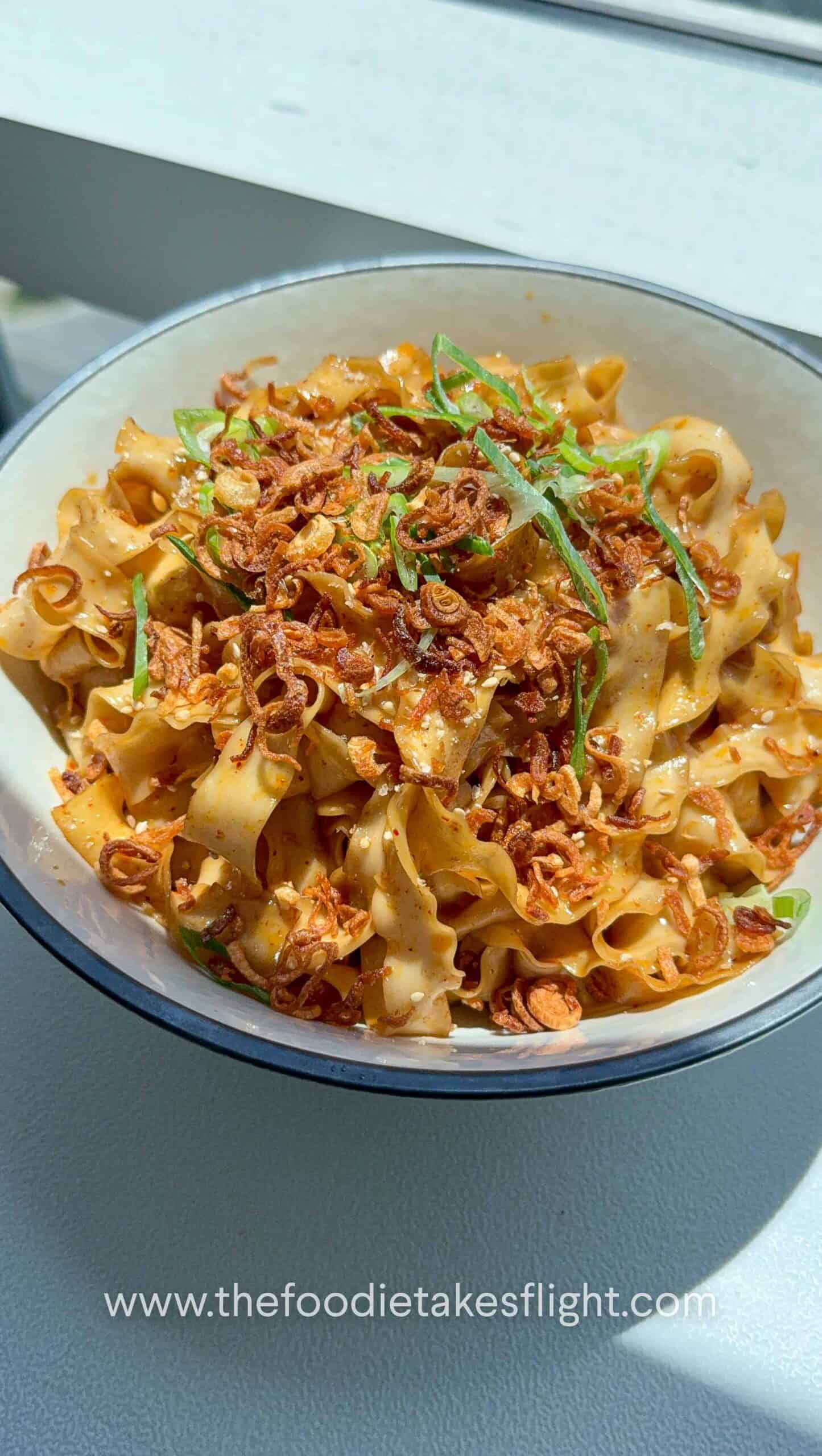
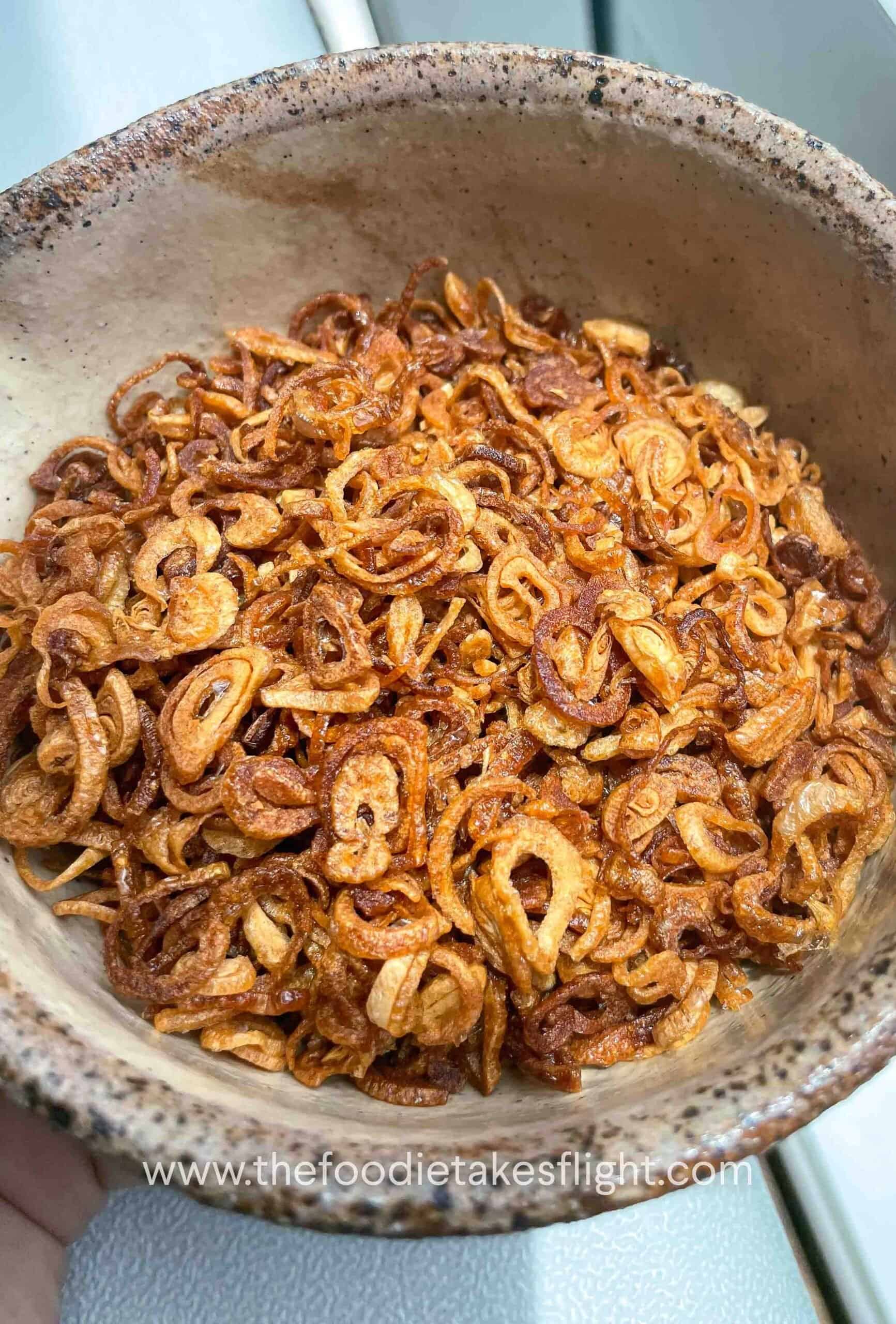
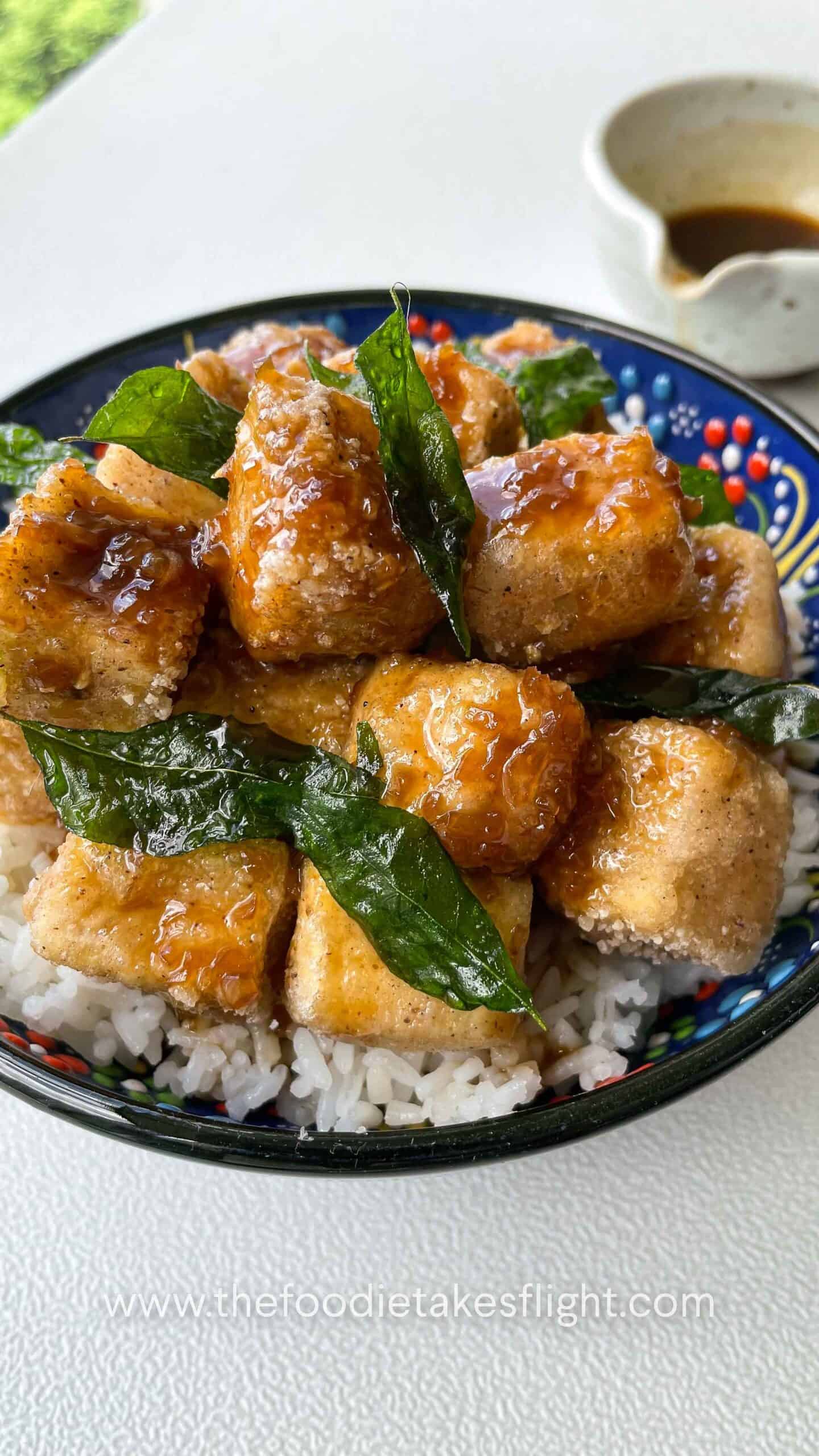
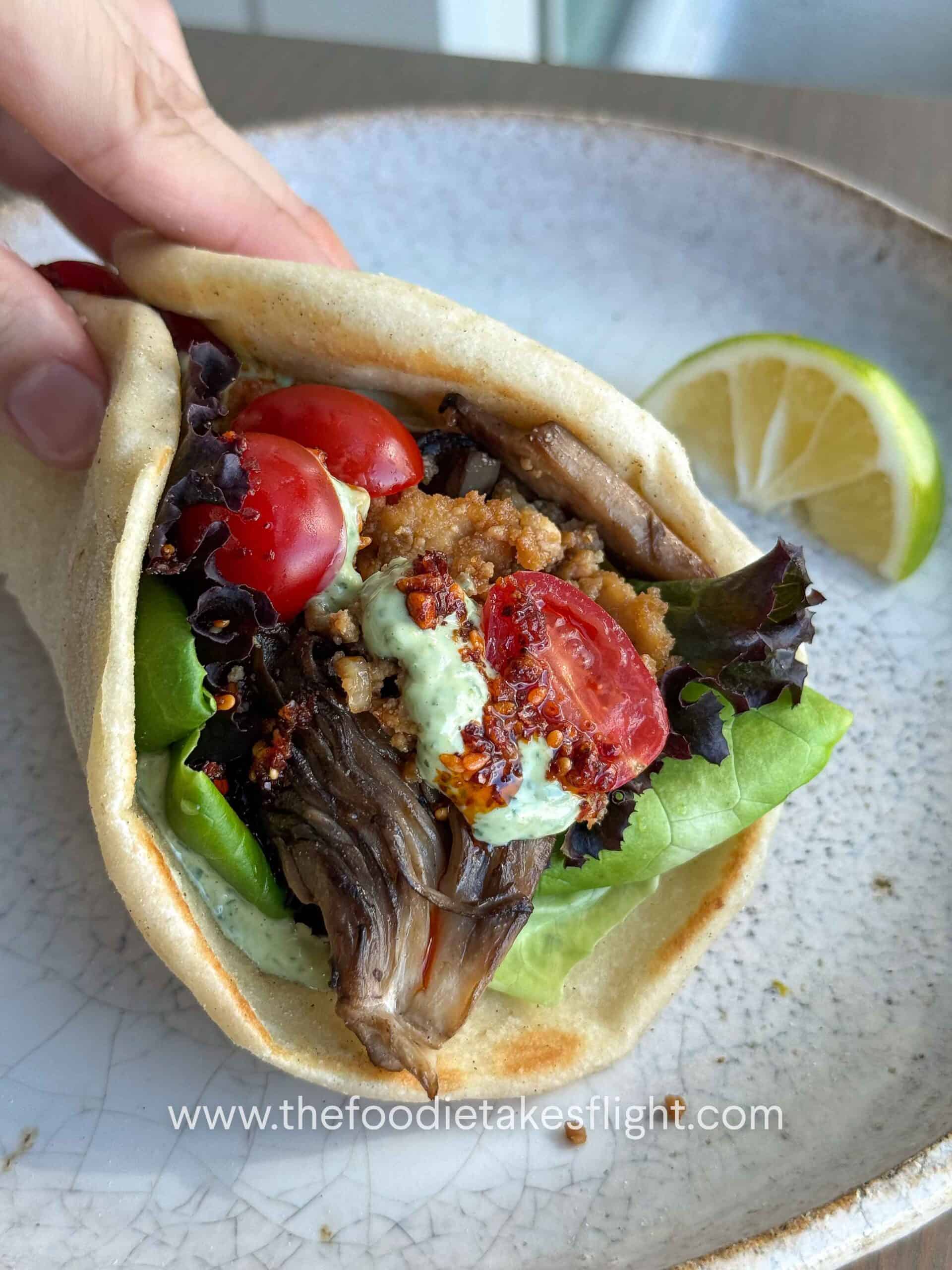
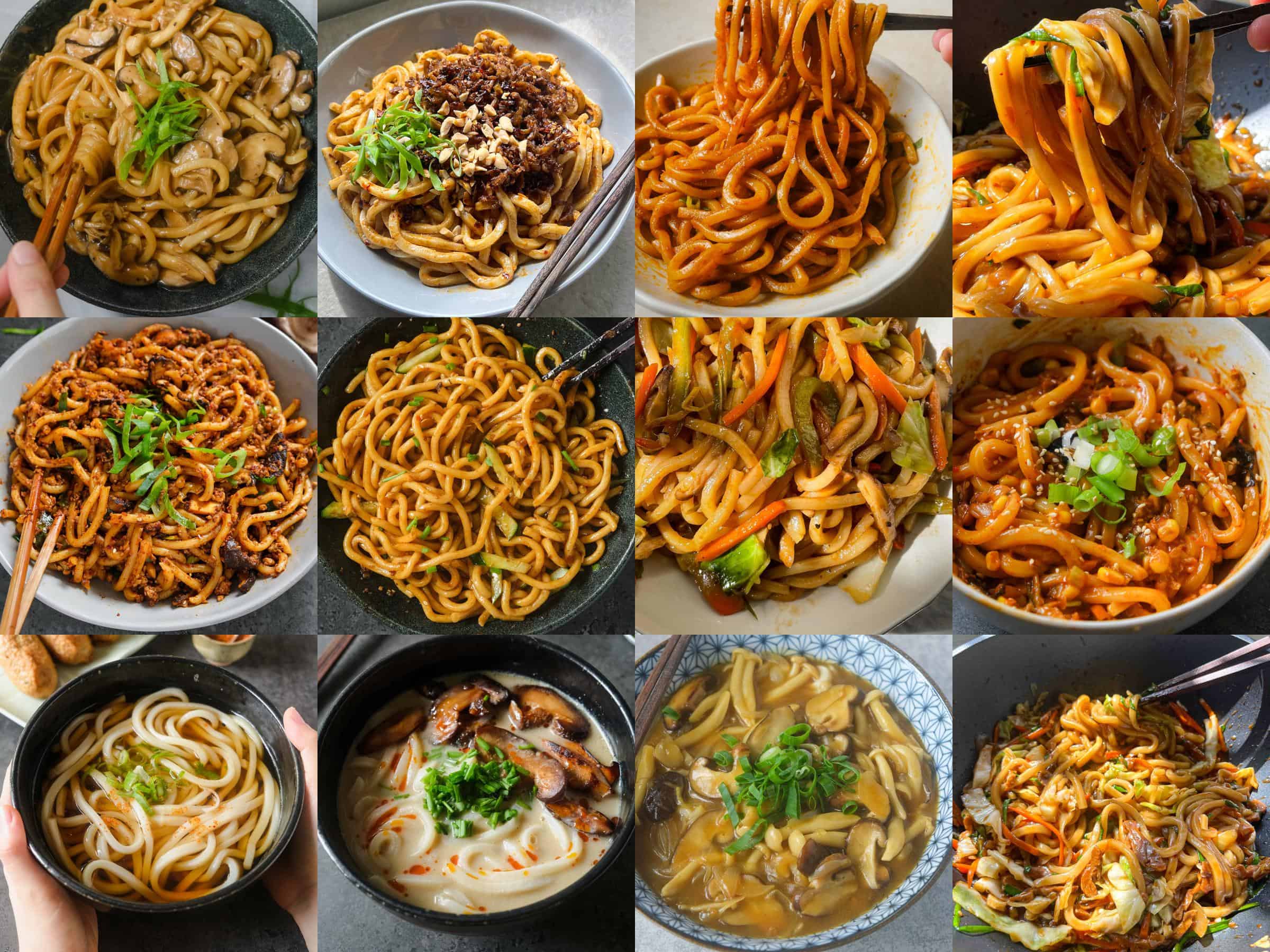
This Post Has 10 Comments
I stumbled across a package of wheat noodles cleaning out my pantry today and then I saw your recipe and knew I had to make it. It was fast, easy and so delicious. Thank you for another amazing recipe!
Hi Kim!! Thanks so much for trying it out and happy that you enjoyed it!! ❤️
Hi! I just discovered your blog and planning to do this recipe this week!
Question: I like to have multiple portions of one recipe for the week, so would you say that making the sauce, refrigerating it and then making the noodles fresh every meal, is a good idea or would it kind of, ruine the sauce?
Hi Naomi! Yes you can refrigerate the sauce in an air-tight container and cook the noodles fresh the next day then mix it in. But I wouldn’t recommend refrigerating the noodles in the sauce. It’s best to cook the noodles and mix it in the sauce to enjoy immediately ◡̈ hope this helps
Hi Jeeca,
Thanks for an amazing recipe! It’s quick and has such wonderful flavors. Your description fits it perfectly. It’s “hearty, spicy, and refreshing.” I highly recommend this and I look forward to trying more on your webpage.
Hi Joanne! Thank you so much and glad you enjoyed it 🙂
This was absolutely delicious! It was the right amount of everything, very well balanced. Thank you so much. This was the nicest dinner I’ve made for myself in a while.
Thanks so much Anne, happy you liked it!! 🙂
Thank you ???
Thanks too, sabina!!